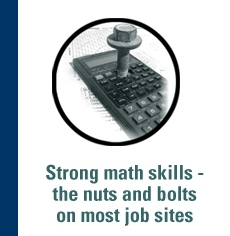Learning Materials in Instruction Summary Report
Background
In the spring of 2008, SkillPlan, the BC Construction Industry Skills Improvement Council, began a research project called Learning Materials in Instruction as part of an HRSDC-funded initiative. For more than ten years, the federal government has invested in the development of work-related learning materials ranging from short instructional tools to full curricula as part of an integrated strategy to increase the Essential Skill levels of Canadians. As with any significant investment, the expectation is that there will be a return on that investment. In this case, the implicit and intuitive assumption has been that the development and use of these resources will increase skill levels.
The primary purpose of this research project was to examine that assumption and explore whether work-related materials, as part of an instructional curriculum, are in fact more effective in skill development than other instructional materials. The key research question then was:
How does the choice of learning materials in instruction impact the acquisition of Essential Skills and contribute to learner success?
The Study
Theresa Kline, PhD from the University of Calgary, was the primary researcher responsible for data collection, analysis and presentation of the final report (see Appendix 2). Within the study two groups were compared. Group 1 used work-related instructional materials 50% or less of the time. Group 2 used work-related instructional materials more than 50% of the time. Both groups represented instructional settings which target the enhancement of employment-related skills or prepare learners for vocational training (see Appendix 1). The data for this study were collected from 270 learners at eight (8) college sites between May 2008 and June 2009.
The Findings
This study focused on instructional materials and their impact on learner skill gains. The study concluded Group 2, instruction which includes more than 50% work-related learning materials, results in learners increasing their employment related skills – specifically reading, document use and numeracy skills – at a higher rate than Group 1, instruction which includes 50% or less work-related materials. This finding is supported statistically. It follows that programs which are intended to prepare participants for employment and workplace opportunity can increase learner success by using work-related learning materials that allow learners to practice skills that mimic work tasks.
A number of supporting and related findings were also generated through this project.
Click here to view the ES in Learning Materials Report in pdf
Top of Page |




